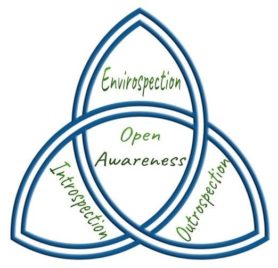 “Ask not what the world needs. Ask what makes you come alive…then go do it. Because what the world needs is people who have come alive.” – Howard Thurman
“Ask not what the world needs. Ask what makes you come alive…then go do it. Because what the world needs is people who have come alive.” – Howard Thurman
.
Burnout (mental, emotional, physical and spiritual fatigue) is generally considered to be caused by too much stress over an extended period where one looses hope in achieving a desired goal (Shirom, 1989). The symptoms of burnout spill over into other areas of the affected person’s life affecting their performance, motivation, personal relationships and social life, and can lead to depression, anxiety and psychosomatic disorders, as well as destructive behaviours toward self and others (Brühlmann, 2011; Cartwright & Cooper, 1996).
According to the NLP Communication Model, the way in which our minds have been conditioned to filter consciousness determines our personal experience of the world, including all our thoughts, feelings and behaviours. This phenomenon underlies why we are the way we are, influencing our health, relationships, and finances, as well as our approach to stressful situations, including our potential for burnout.
Focussing on exploring the underlying causes of burnout, my MSc in Transpersonal Psychology studies have revealed that inhibited access to the more subtle levels of consciousness or constricted flow between levels of consciousness may increase the potential of what I refer to as “transpersonal burnout”. Stephen Wright (2010, p.8) describes this condition aptly as a form of deep human suffering at every level – physical, psychological, social, spiritual – which occurs when old ways of being in the world no longer work and start to disintegrate. Transpersonal burnout is soul sickness, a condition that I sometimes think of as being stuck in mental mud and clueless about any solution. This state is characterised by a narrowing of awareness that prevents one from experiencing one’s authentic self and utilising one’s inner resources. Different stages of this condition are experienced as anxiety, fear, overwhelm, frustration, and helplessness, – which can escalate to mental exhaustion, physical fatigue and emotional bankruptcy, including depression (Brühlmann, 2011; Shirom, 1989).
Transpersonal burnout (TpB) is triggered by stressful or intensely emotional experiences in our daily life, but the potential for it to be triggered most likely already exists in the unconscious awareness of such individuals. Furthermore, according to Stanislav Grof (2000), various emotional and psychosomatic disorders including TpB develop as a result of the reinforcing influence of traumatic events in our postnatal history, which in turn have roots in the perinatal, prenatal and transpersonal domains. If the seeds for potential TpB have been planted, the optimal fertile ground for TpB to manifest is often the perception of issues being unresolvable in valued relationships and/or a perceived loss of connection with one’s intrinsic source of mental, emotional, physical and spiritual wellbeing. This kind of limiting perception, if triggered, can manifest into two different types of TpB, depending on the values of the individual.
The first type of TpB (TpB-1) can be identified in various contexts, for example,- the placement of significant value in external goals, fuelling materialism and causing overexertion amongst competitors as well as peers for the prestige of an acclaimed title or other acquisitions. This hypothesis further associates TpB-1 with the large scale of dysfunctional relationships in society,- from disharmony in the family, to personal relationship crises, and professional relationship stress, including the possibility of TpB-1 being an underlying factor in the breakdown of group relations and international conflict,- all contributing to substance abuse, self harm, violence, power struggles, and segregation, for example (Dierendonck, Garssen & Visser, 2005). This condition is known to be contagious in organisations, being transferred from one employee to another (cited in Gonzalez-Moralesa, G., et al. 2012) and it can spread from one area of a persons’ life to another infecting the people that one interacts with regularly (Brühlmann, 2011). Thomas Germine (n.d) refers to David Bohm’s (1994) impression of a society as one that has lost its connection with the implicate order (the infinite Unconscious), behaving like a set of disjointed mechanical fragments, one of which is oneself — this is TpB-1 on a large scale.
The second type of transpersonal burnout (TpB-2) can be compared to what Stan Grof and Christina Grof refer to as “Spiritual Emergency” (1989),- crises that emerge when the process of growth and change becomes chaotic and overwhelming. TP-2 has also been compared to the dark night of the soul, which Eckhart Tolle (2011) refers to as a collapse of a perceived meaning in life. Wright (2010) calls burnout “a spiritual crisis on the way home”, with “home” being one’s state of spiritual well-being. TpB-2 is that stage of the dark night shortly before dawn through which the seeker of spiritual enlightenment must pass in order to wake up to the realisation that they are already “home”.
A common characteristic between those who suffer from TpB-1 and TpB-2 is that both are striving to achieve a goal that suddenly seems impossible, they become overwhelmed and they feel like they can’t go on in the same mode of operation, yet other modes are not conceivable or at least not favourable. Those experiencing TpB, regardless of the type, often loose touch with the initial source of inspiration that set them on their path, they become focussed on the doom and gloom of their crisis, and they loose hope. Steve Taylor (2013) refers to the point some people reach when the values and goals of a superficial and ordinary life don’t satisfy them anymore, when there is a yearning for something more, an impulse beneath the surface to find a more meaningful life, or to make contact with a deeper part of one’s own being. The incongruence between where one is and where one wants to be can surmount to intense personal suffering. I have found that those who don’t give up by resorting to external sources to temporarily alleviate their symptoms, eventually realise something of tremendous personal significance or learn something important about themselves, and as such the best way forward for these individuals is revealed sooner or later. Those who take a mindfulness approach seem to transition through their burnout phase more quickly and easily, additionally, those who have integrated mindfulness and meditation into their life appear to be less affected by burnout, or immune to it.
I have utilised mindfulness-based approaches (predominantly applied open awareness) over the past several years to help clients overcome and heal aspects of both TpB-1 and TpB-2. The benefits of mindfulness in treating and preventing burnout is verified in Katz et al. (2005), who add that mindfulness approaches help to resolve old wounds and unresolved issues, thereby indicating how mindfulness can address the cause of stress and burnout. Several of my clients, who while being guided through a mindfulness based process were able to spontaneously recall distant memories that signified to these clients the root cause of their current issue. This confirms that the disposition for burnout to occur does often have causal links far back in the individual’s personal history, as Grof (2000) suggests in similar examples.
Mindfulness based healing interventions were used to heal the root cause for these individuals, and mindfulness practices were used by these individuals in order to integrate and sustain the healing in their present life. In every case the technique to facilitate open awareness (previously referred to as peripheral awareness) proved to be pivotal in the healing process, as it provided these clients with a simple skill to open the aperture of their awareness. In other words, they learnt how to activate their body’s relaxation response and enhance their internal awareness of thoughts, emotions and somatic experience, while at the same time establishing a sense of interconnectivity with others and the world around them. These phenomena are associated with open awareness (Hanson and Mendius, 2009; Overdurf, 2013) and prove to be a suitable mindfulness approach when dealing with both stress and burnout. Once integrated as an automatic response to the challenges of life, open awareness may support an improved quality of life, or as suggested by Walsh and Vaughan (1980), a raised perception of reality.
A mindfulness-based lifestyle has been suggested by Niemiec, Rashid & Spinella, (2012) to cultivate productive engagement in work, an expanded sense of meaning and purpose, enhanced physical and psychological well-being, and improved relationships. Don’t we all want that? In the following article in this series, I will reveal simple yet effective mindfulness approaches toward dealing with stress and burnout.
For now, you may like to contemplate the following:
What makes you come truly Alive?
What gets you into The Flow?
What’s your next step toward being This Person?
Choose what makes you come Alive…every step of the way!
Written by Jevon Dangeli – MSc Transpersonal Psychology, Coach & Trainer
Related resources:
Open Awareness – Holding Space in Coaching, Therapy & Life – video
Applied Open Awareness for Resilience & Resourcefulness – article
Expanding Self Awareness – podcast
The Burnout Self Diagnostic Tool
References:
Bohm, D. (1994). Soma-Significance. Psychoscience, 1, 6-27.
Brühlmann, T. (2011). Open Forum at The World Economic Forum in Davos, Switzerland. Retrieved April 4, 2013, from the World Wide Web: http://www.youtube.com/watch? v=77Fy7kKHAfA
Cartwright, S. and Cooper, C.L. (1996). ‘Coping in occupational settings’, in Zeidner, M. and Endler, N.S. (Eds.), Handbook of Coping, New York: Wiley, pp. 202–20.
Dierendonck, vD., Garssen, B. and Visser, A. (2005). Rediscovering meaning and purpose at work: the transpersonal psychology background of a burnout prevention programme, in A.G. Antoniou & C.L. Cooper (Eds.), Research Companion to Organizational Health Psychology, 40,623. Cheltenham: Edward Elgar Publishing Limited
Germine, T. J. (n.d.). The quantum metaphysics of David Bohm. Retrieved December 19, 2012, from the World Wide Web: http://goertzel.org/dynapsyc/1995/TGERMINE.html.
Gonzalez-Moralesa, G., Peiro, J., Rodriguez, I., Bliesed, P. (2012). Perceived collective burnout: a multilevel explanation of burnout. Anxiety, Stress, & Coping Vol. 25, No. 1. 43-61
Grof, S. (1985). Beyond the Brain: Birth, Death, and Transcendence in Psychotherapy,State University of New York, Albany, pp. 16/432
Grof, S. and Grof, C. (1989). Spiritual emergency: when personal transformation becomes a crisis. Tarcher.
Grof, S. (2000). Psychology of the future, New York: State University of New York Press, p. 75
Grof, S. (2003). Implications of modern consciousness research for psychology: Holotropic experiences and their healing and heuristic potential.The Humanistic Psychologist, Vol. 31, Issue 2-3, 50-85
Hanson, R., & Mendius, R. (2009). Buddha’s brain: The practical neuroscience of happiness, love, and wisdom. New Harbinger Publications.
Katz, J. C., Wiley, S., Capuano, T., Baker, D., Deitrick, L., Shapiro, S. (2005). The Effects of Mindfulness-based Stress Reduction on Nurse Stress and Burnout. Holistic Nursing Practice, p. 86
Niemiec, R., Rashid, T., Spinella, M. (2012) Strong Mindfulness: Integrating Mindfulness and Character Strengths. Journal of Mental Health Counseling. Vol. 34. No. 3.240-253.
Overdurf, J. Personal communication, June 20, 2013. http://www.johnoverdurf.com
Peripheral Vision: Explained in ‘Find The Gap – part 3‘ article.
Shirom, A. (1989). Burnout in work organizations’, in C.L. Cooper and I. Robertson (Eds.), International Review of Industrial and Organizational Psychology, New York: Wiley, pp. 26–48.
Taylor, S. (2011) Transformation Through Suffering : A Study of Individuals Who Have Experienced Positive Psychological Transformation Following Periods of Intense Turmoil. Journal of Humanistic Psychology. 52: 30
Taylor, S. Personal communication, June 27, 2013 (2011).
Tolle, E. (2011). Retrieved from The World Wide Web, July 9, 2013, http://www.eckharttolle.com/newsletter/october-2011
Walsh, R and Vaughan, F. (1980). Journal of Humanistic Psychology 20, 5-31.
Wright, S. (2010). Burnout, a spiritual crisis on the Way Home. Cumbria. Sacred Space Publications.
